#Entertainments National Service Association
Explore tagged Tumblr posts
Photo

Des londoniens réfugiés dans la station de métro Aldwych assistent à un concert organisé par l’Entertainments National Service Association (ENSA) pendant le Blitz – Londres – 1940
L'Entertainments National Service Association est une organisation créée en 1939 par les acteurs Basil Dean et Leslie Henson pour divertir le personnel des forces armées britanniques pendant la seconde guerre mondiale.
#WWII#Bataille d'Angleterre#Battle of Britain#Blitz#Métro#Métro londonien#London underground#Civils#Entertainments National Service Association#ENSA#Aldwych station#Londres#London#Angleterre#England#1940
9 notes
·
View notes
Photo
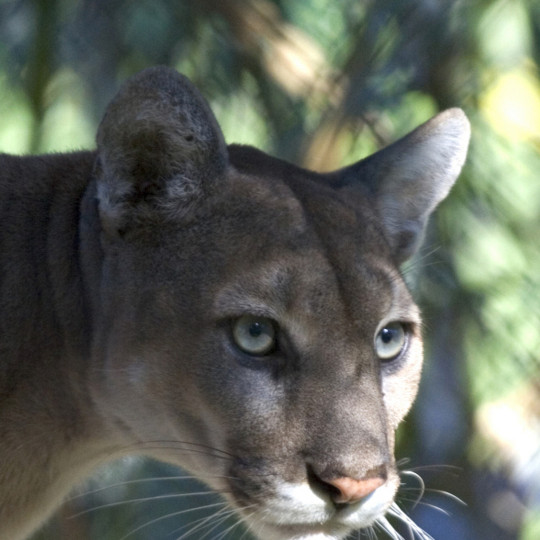
Nih'a'ca Tales
Nih'a'ca tales are Arapaho legends concerning the trickster figure Nih'a'ca, who, according to Arapaho lore, is the first haxu'xan (two-spirit), a third gender, often highly regarded by many Native American nations, including the Arapaho. The Nih'a'ca tales are similar to the Wihio tales of the Cheyenne and the Iktomi tales of the Sioux.
North American Panther
Rodney Cammauf /National Park Service (Public Domain)
Circumstances and situations differ between the Nih'a'ca tales and those concerning trickster figures of other Native peoples of North America, but the central character of the trickster plays the same role – sometimes as sage and mediator, sometimes as schemer and villain – in them all. In the case of Nih'a'ca – always referred to by the male pronoun in English translations of Arapaho tales – he is frequently depicted in legend as someone who tries to better himself, usually at the expense of others or by trying to take shortcuts, and suffers for it.
At the same time, Nih'a'ca can be wise, offering advice, or clever, as in the story Nih'a'ca Pursued by the Rolling Skull, in which he must find a way to escape death. His identity as a haxu'xan is often, though not always, central to the story's plot – as in Nih'a'ca and the Panther-Young-Man where he, identifying as a woman, marries a panther – and, in stories where his gender is highlighted, serves to teach an important cultural, moral, lesson.
The Nih'a'ca tales are still told in Arapaho and Cheyenne communities, as well as others – including LGBTQ organizations – not only for their entertainment value but for the lessons they offer on personal responsibility and the proper respect and treatment to be shown to others. Like the trickster figures of other nations, Nih'a'ca is often depicted as, or associated with, the spider – spinning webs to catch others which often wind up entangling himself.
The Two-Spirit & Nih'a'ca
Two-Spirit is a modern designation, coined as recently as 1990, for the third gender recognized by many Native American nations for centuries before their contact with European immigrants. Because the term is so new, the two-spirit is often, incorrectly, assumed to be a recent 'discovery' made by anthropologists when, actually, European accounts going back to 1775 reference a third gender among North American Native peoples and the oral histories, myths, and legends – like the Nih'a'ca tales – also attest to the long-standing recognition of two-spirits in a given community.
As the term implies, a two-spirit is someone who recognizes both a male and female spirit dwelling within and often, though not always, dresses in the clothes and performs the duties of their opposite biological sex. Because they are understood as both male and female, two-spirits are recognized as possessing especially keen insight and often serve as mediators – in the present as they did in the past – in resolving personal or communal disputes. They were, and are (or can be), also regarded as holy people – "medicine men" and "medicine women" – serving as mediators between the people and the spirit world. Scholar Larry J. Zimmerman comments:
The relationship between a holy person and the spirit world is almost that of a personal religion. The first meeting with the spirits becomes the personal myth, and the power of this myth is important for establishing the holy person's credentials with the tribe, on behalf of which his or her skills are used to locate game, find lost objects, and, above all, treat the sick. The holy person can enter a trance at will and journey to the sacred world.
(132-133)
While Nih'a'ca is sometimes depicted as a holy person, he is more often quite the opposite, possessing characteristics such as selfishness, cruelty, and a blatant disregard for cultural norms. Through the Nih'a'ca tales, which frequently conclude with the central character suffering for his misdeeds, higher values including selflessness, kindness, and respect for tradition and the feelings of others are highlighted.
Nih'a'ca, then, usually serves as an exemplar of bad behavior and is given the identity of a two-spirit – in fact, the first two-spirit in the world – because the recognition of the sacred aspect of the two-spirit further emphasizes just how misguided Nih'a'ca's choices and actions can be. The tales themselves are a kind of 'trickster' turning expectations upside down and, in so doing, offer an audience the opportunity for reflection on their own behavior and the possibility of transformation.
Continue reading...
63 notes
·
View notes
Text



📸: womenswayphilly
https://womensway.org/news-events/womens-way-46th-annual-celebration/
LUCRETIA MOTT HONOREES: TOBIN HEATH AND CHRISTEN PRESS
2X WORLD CUP WINNERS, PAY EQUITY TRAILBLAZERS, CO-FOUNDERS OF RE-INC
*While their soccer season commitments prevent in-person attendance, we are excited to hear from them in an exclusive virtual acceptance speech to learn more about their inspiring lives and work.
Tobin Heath is a 2x World Cup Champion for the U.S. Women’s National Soccer team, an equal pay pioneer, and the Co-Founder and Co-CEO of RE—INC. She is a 4x Olympian, with two gold medals and a bronze medal. She is known as one of the most skillful and entertaining players in the game. Throughout her club career, Heath has played for PSG, the Portland Thorns, Manchester United, and Arsenal. Tobin brings her vision, leadership, and creativity as a Co-CEO of RE—INC, a values-led brand that exists to reimagine the way women are seen and experienced in sports. This summer, RE—INC launched a media division with a critically acclaimed show: The RE—CAP Show World Cup Edition, hosted by Tobin.
Christen Press is a 2x World Cup Champion for the U.S. Women’s National Soccer team, an equal pay pioneer, and the Co-Founder and Co-CEO of RE—INC. She is one of the top 10 goalscorers ever on the USWNT and holds the scoring record at Stanford. Christen currently plays for Angel City FC. Christen led the USWNT’s historic achievement of Equal Pay and served as the leader of the USWNT Player’s Associate for 2 years. For four years, Christen has been the CEO, and now Co-CEO of RE—INC, a values-led brand that exists to reimagine the way women are seen and experienced in sports. She is a 2-year Board Member of Grassroots Soccer, a non-profit organization that uses the power of soccer to provide mentors, information, and health services to at-risk youth in Africa.
63 notes
·
View notes
Text
Jonathan Groff, T. Oliver Reid, Brooke Shields Among 8 Industry Members Joining Broadway Cares Board of Trustees
During the October 10 meeting, the Board lovingly acknowledged the contributions of late trustees Chita Rivera and Gavin Creel.
The Broadway Cares/Equity Fights AIDS Board of Trustees voted unanimously October 10 to add eight industry leaders, all with a shared commitment to the lifesaving impact of Broadway Cares.
Joining the board: Kristin Caskey, executive vice president, content and creative at Ambassador Theatre Group; production stage manager Julie DeVore; Tony-winning actor Jonathan Groff; Jason Laks, interim president and general counsel at The Broadway League; production stage manager Johnny Milani; Erik Piecuch, senior vice president, entertainment banking at City National Bank; actor and Black Theatre Coalition co-founder T. Oliver Reid; and Actors’ Equity Association president Brooke Shields.
“These eight luminaries are essential voices across our industry,” stated Robert E. Wankel, president of the Broadway Cares/Equity Fights AIDS Board of Trustees and chairman and CEO of The Shubert Organization. “Their expertise and unique perspectives will play a critical role in ensuring the continued success and future growth of Broadway Cares’ fundraising and grant-making. The Broadway Cares board is excited and proud to continually bring new, fresh voices to the table.”
Stepping off the board after years of distinguished service are Chris Boneau, Linda Duncombe, Adam Krauthamer, Stephen Lewin, Kate Shindle, and Charlotte St. Martin. The Board and staff also lovingly acknowledged the contributions of former trustees Chita Rivera and Gavin Creel, who both passed away in the last year.

15 notes
·
View notes
Text
2024 Garden Parties!!!
The dates for The King's Garden Parties* in 2024 are as follows:
✨ Buckingham Palace - Wednesday 8th May 2024
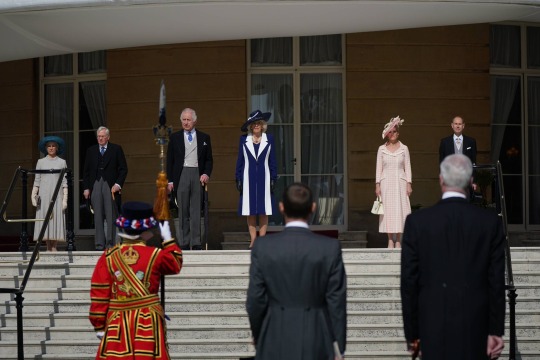
The King and Queen, the Duke and Duchess of Edinburgh and the Duke and Duchess of Gloucester hosted the first garden party of 2023
✨ Buckingham Palace - Tuesday 21st May 2024
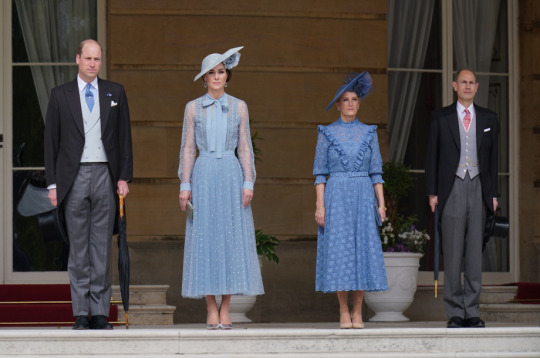
Last year (2023) the Prince and Princess of Wales with the Duke and Duchess of Edinburgh hosted the Kings Garden Party at Buckingham Palace
✨ Palace of Holyroodhouse - Tuesday 2nd July 2024
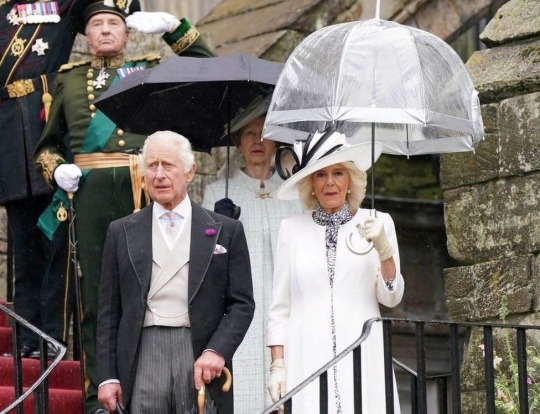
The King and Queen with the Princess Royal hosted last years Holyrood week garden party
*Please note, Garden Parties are traditionally referred to as The Sovereign's Garden Party. Attendance at each Garden Party will be confirmed on the day.
✨ The Creative Industries Garden Party - Wednesday 15th May 2024
His Majesty The King has given permission for a Garden Party to be hosted at Buckingham Palace, with support from the Department for Culture, Media and Sport, in celebration of the Creative Industries of the United Kingdom. The Garden Party will bring together approximately 4,000 representatives across culture, art, heritage, film, TV, radio and fashion.
The Garden Party will celebrate the economic value of the sector to the UK economy in helping to showcase British culture and creativity around the Globe. In 2022 the Creative Industries generated over £124 billion in economic value and employed 2.4 million people in the United Kingdom. From theatre to video games, publishing to design, museums and galleries to film sets and music studios, the creative industries, and the creators and organisations within them, bring happiness, prosperity and help shape the world around us.
✨ The Not Forgotten Association Annual Garden Party - Friday 17 May 2024
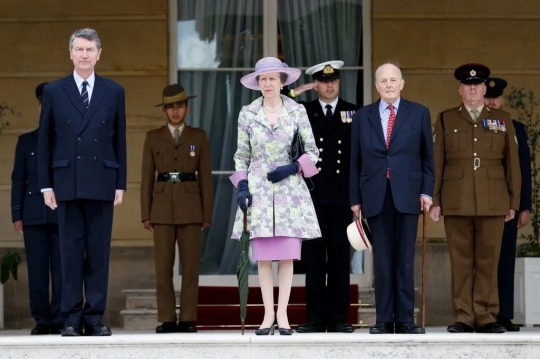
From the Not Forgotten Association garden party in 2022
His Majesty The King has given permission for The Not Forgotten Association Annual Garden Party to be held by The Princess Royal, accompanied by Vice Admiral Sir Tim Laurence, in the Buckingham Palace Garden on Friday, 17th May 2024.
The Not Forgotten Association is a tri-service charity which provides entertainment, leisure and recreation for ex-service men and women with disabilities or illness and serving personnel who are wounded, injured or sick. The Garden Party will bring together 2,000 beneficiaries of all ages and from all services.
The Princess Royal is Patron of The Not Forgotten Association.
✨ Royal National Lifeboat Institution (RNLI) - Thursday 23rd May 2024
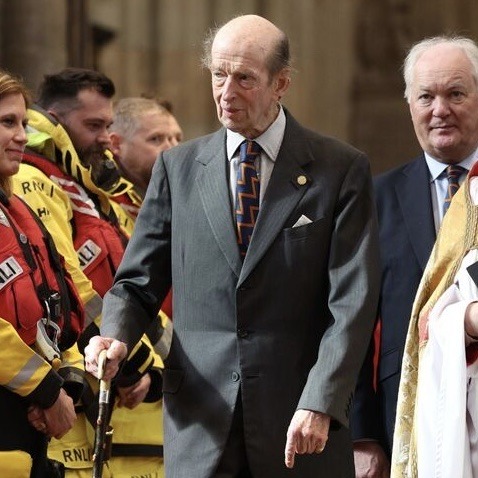
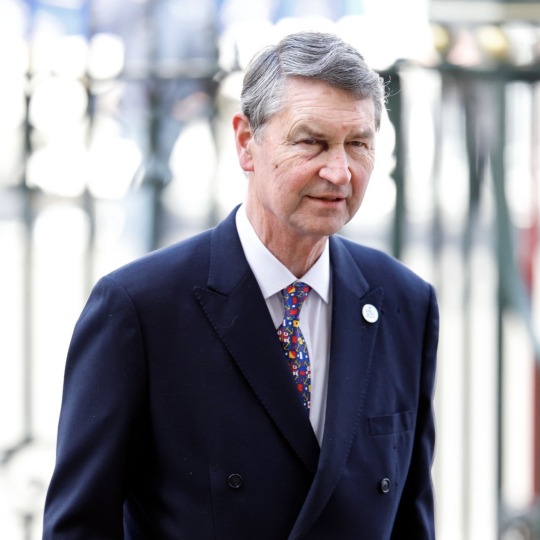
The Duke of Kent and Sir Tim Laurence attending the RNLI 200 service of thanksgiving at Westminster Abbey in March 2024
His Majesty The King has also given permission for the RNLI 200 Anniversary Garden Party to be held by The Princess Royal, accompanied by Vice Admiral Sir Tim Laurence, and The Duke of Kent in the Buckingham Palace Garden on Thursday, 23rd May 2024 in celebration of the charity's milestone anniversary.
Since the RNLI was founded on 4th March 1824, following an appeal to the nation from Sir William Hillary, the charity has saved 146,277 lives - this equates to an average of two lives saved every day for 200 years. Today, the RNLI operates 238 lifeboat stations around the UK and Ireland, including four on the River Thames, and has seasonal lifeguards on around 240 beaches around the UK.
The Duke of Kent has been President of the RNLI since 25th March 1969. In his 55 years as President, the RNLI's volunteer lifeboat crews and beach lifeguards have saved more than 51,000 lives. Sir Tim Laurence is also Vice President of the charity.
The Garden Party will bring together 2,500 of the charity's long-serving volunteers, staff and their families as well as featuring an Atlantic 85 inshore lifeboat.
#exciting!!!#garden parties mean SUMMER!!!!!#these will be so much fun to follow#princess anne#princess royal#tim laurence#timothy laurence#king charles iii#prince edward duke of kent
19 notes
·
View notes
Text
A Texas-led bill that would mandate AM radio capability in car manufacturing was blocked from passing in the U.S. Senate on Tuesday.
Sen. Ted Cruz, R-Texas, requested a unanimous consent decision on his AM Radio for Every Vehicle Act. The legislation was blocked by Sen. Rand Paul, R-Kentucky, who said the mandate on private companies would be an overstep of congressional power.
For months, Cruz has pushed for vehicle manufacturers to retain AM radio in new car models to protect emergency communication channels and diverse content. He partnered with Sen. Ed Markey, D-Mass., in May to introduce the legislation, which had broad bipartisan support in the Senate.
A corresponding bill was introduced in the House and has 191 cosponsors, including two Democrats and 12 Republicans from Texas.
AM radio is “enormously important to millions of Texans,” Cruz told The Texas Tribune in October. He noted the platform is essential for diverse talk radio — especially for conservative voices.
“I think silencing those voices is enormously harmful to both free speech but also to a robust democratic process,” Cruz said.
On the Senate floor Tuesday, Cruz pointed to conservative commentators Rush Limbaugh, Mark Levin, Sean Hannity or Glenn Beck, who all found audiences on AM radio.
“AM radio is a haven for people to speak, even if their views are disfavored by the political ruling class,” Cruz said on the Senate floor. “Rush Limbaugh would not exist without AM radio. The views of my friend, [Rand Paul] the Senator from Kentucky, would be heard by many fewer people without AM radio.”
AM radio in rural Texas and other southern states is also a platform for religious, local news and sports programming. Local stations will also run chain or network programming with more well-known commentators, according to Al Cross, director of the Institute for Rural Journalism and Community Issues.
Some rural communities are dependent on getting local interest information from a single radio station or single newspaper, Cross said.
“If you allow the manufacturers to not put AM on cars, then you're killing off an essential part of the media landscape of the United States,” Cross said.
Supporters of the bill also point to AM radio’s importance as a means to protect emergency communication channels. A fall 2022 Nielsen survey showed AM radio reaches over 80 million Americans monthly.
“During times of disaster, AM radio is consistently the most resilient form of communication,” Cruz said.
AM radio is used as an alert system by federal, state and local agencies to communicate in times of disaster when other forms of communication fail, like during a power outage.
Cruz said he was confident that the legislation would pass overwhelmingly if brought to the floor for a vote, but since it was blocked on Tuesday it now awaits scheduling by Majority Leader Chuck Schumer.
The congressional pressure already provoked change in the industry. Days after the bills were introduced in May, the CEO of Ford announced that the company would keep AM radio in 2024 models.
Car companies started cutting AM radio capacity to simplify manufacturing and because of assumptions that American consumers don’t find AM radio necessary, according to Oscar Rodriguez, the president of the Texas Association of Broadcasters. Companies also can make revenue from car owners’ subscription-only radio services.
“It became very clear very quickly to the automakers that this is a highly valued service that's extraordinarily important,” Rodriguez said. “It's not just an entertainment service. It is an emergency communications service.”
AM station signals cover 90% of the American population, according to the National Association of Broadcasters, and are able to continue operations during power outages.
But a number of national trade associations have defended manufacturers’ right to exclude AM capacity, arguing that FM radio, internet access and text emergency alerts can replace the loss of AM radio.
“This is giving preference to a technology that is facing fierce competition,” said India Herdman, manager of policy affairs for the Consumer Technology Association.
A FEMA strategic plan pointed out that Americans are “moving away” from radio and broadcast television as primary sources of news and information, one reason for emergency managers to prioritize alerts to smartphones and other methods.
Herdman said that a mandate for AM radio contradicts previous congressional action authorizing federal funding for updated emergency communications.
“What are we spending those appropriated dollars for if we're just going to go back to using century-old technology?” Herdman said.
But in a state like Texas, with a significant rural population, proponents of AM broadcasting argue the access is key.
Cooper Little, executive director of the Independent Cattlemen’s Association, said Texans in the agricultural sector rely on AM radio for reports on livestock and markets, as well as severe weather alerts.
“Things happen at a moment's notice,” Little said. “In areas where there's not necessarily cell service, that's how you spread the word.”
37 notes
·
View notes
Photo
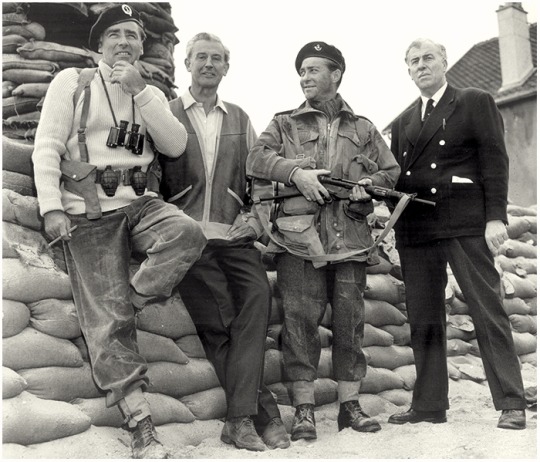
I never admitted to anybody during my entire military service that I had been an actor. I was terrified that I would be put in charge of Ensa [Entertainments' National Service Association]. Not even my closest friends knew I was an actor. I told them I was reading English at St Andrews University.
- Richard Todd
In his heyday in the 1950s and 1960s, Richard Todd was Britain’s leading matinee idol. If you love old movies, you’ll have seen Todd in one of his starring roles in “The Virgin Queen” opposite Bette Davis, “Stage Struck” with Marlene Dietrich, or “The Dam Busters” for which he won a Golden Globe Award. He was the tough little Scotsman in the wartime weepie “The Hasty Heart” and had audiences madly hunting for hankies.
Those were the days when Todd streaked across North American film screens as virtually every romantic hero from Rob Roy to Robin Hood. Ian Fleming chose him to play James Bond in “Dr. No” in 1962, but a schedule clash meant Sean Connery stepped into the role.
Little less known is the fact that he was also among the first British soldiers and the first Irishman to land in Normandy on D Day. More specifically, he participated in Operation Tonga during the D-Day landings in Normandy on 6 June 1944.
So it must have been surreal for Richard Todd the hearthrob actor to find himself playing Major John Howard in the epic movie ‘The Longest Day’ (1962) based on Cornelius Ryan’s book. Not least because he served with Howard and took part in the fighting at Pegasus Bridge that Major John Howard was tasked to secure on D Day.

Richard Todd was born in Dublin, Ireland, in 1919. His father was a medic in the British Army and, as his posting required, the early years of his life were spent in India. The family settled in Devon upon their return to England, and Richard was educated at Shrewsbury Public School, in Shropshire. The theatre was his first love, and he furthered his dramatic skills at the Italia Conti school, thereafter moving to Scotland where he helped to form the Dundee Repertory Theatre. When War was declared, Todd went to St. Andrew's University on the following day to volunteer. He was not a member of the University, but he not only convinced the selection unit that he was, but also added that he had been reading English there for six months, and that he had obtained a Cert A in his school cadet corps; a key point to being accepted as an officer. Despite success in passing off this invented career, Todd was to be disappointed by a lack of interest in him thereafter.
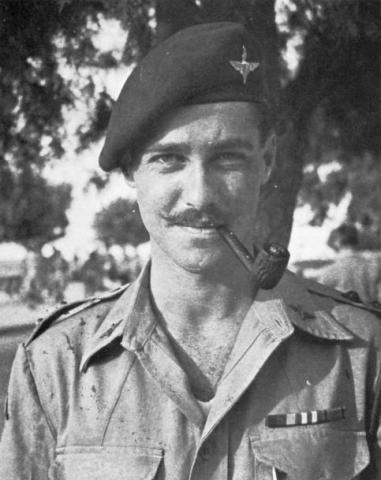
Becoming increasingly desperate to get into the War before it ended, he sent numerous letters to the War Office to press his case, which, in June 1940, was finally noticed.
Accepted by the King's Own Yorkshire Light Infantry, Todd went to Sandhurst to receive his officer training. He had a very lucky escape here when he was in a corridor on the second floor of a building when it was hit by a bomb, and he was blown into the garden outside by the blast. He got to his feet in the darkness and did not feel particularly affected by it, but an examination by torchlight revealed that his whole body was covered in blood from numerous small wounds.
A spell his hospital delayed his passing out from Sandhurst until early 1941. Celebrating in London, he narrowly avoided death again when he found his usual haunt, the Cafe de Paris, was too crowded to admit him and so he went elsewhere; it was hit by a bomb that same night and 84 people were killed.
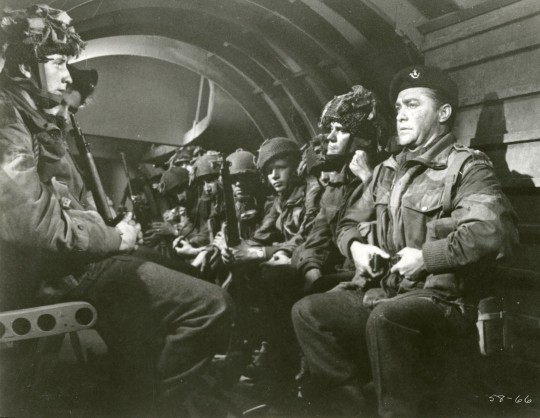
His Battalion, the 2nd/4th Battalion The King's Own Yorkshire Light Infantry, was posted to XII Corps in defence of Kent, where a German invasion if it came would almost certainly land. Todd was given command of the infantry in the Dymchurch Redoubt, a fort of the Napoleonic era mounting two six-inch guns.
In the event of an invasion, this would certainly have been a primary target for the enemy, and those manning it were told that, with the main defensive line far to their rear, they would be left to fight to the end. General Montgomery commanded XII Corps at this time, and his characteristic emphasis on training and preparedness led to the formation of the first Battle Schools. Richard Todd attended one of these, and the experience allowed him to run his own School when, in December 1941, he was sent to Iceland with the 1st/4th King's Own Light Infantry to be trained in arctic and mountain warfare. Returning to England in September 1942, he eventually ended up in the 7th (Light Infantry) Parachute Battalion of the 6th Airborne Division. He was among troops of the 7th (Light Infantry) Parachute Battalion who, at 00:40 hours on 6 June 1944, landed behind the Normandy beaches in a cornfield, perilously close to tracer fire.
Todd scrambled into a wood and with 150 other paratroopers reached Pegasus and Ranville bridges, vital crossings to allow Allied forces to break out from the beachheads into Normandy. They had been seized by a glider force from the Ox and Bucks Light Infantry under the command of Major John Howard, who needed reinforcements to fend off ferocious German attacks.
In his memoirs, Caught in the Act, Todd would write of the carnage, “There was no cessation in the Germans' probing with patrols and counter-attacks, some led by tanks, and the regimental aid post was overrun in the early hours. The wounded being tended there were all killed where they lay. There was sporadic enemy mortar and artillery fire we could do nothing about. One shell landed in a hedge near me, killing a couple of our men.”
Todd would go on and see action at the Battle of the Bulge and push into the Rhine into Germany. After VE day, his division returned to the UK for a few weeks, then was sent on counter-insurgency operations in Palestine. During this posting he was seriously injured when his Jeep overturned, breaking both shoulders and receiving a concussion. He returned to the UK to be demobilised in 1946.
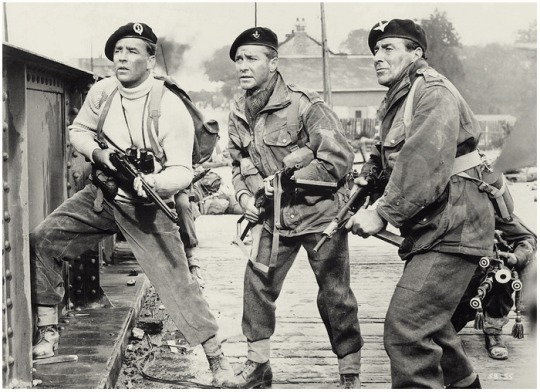
In 1962, Todd was given the part of Major John Howard in the film adaptation of Cornelius Ryan's book about the D-Day landings, ‘The Longest Day’ (1962). Due to the nature of cinema, it was impossible for the film to give a thorough reflection of the role of the 6th Airborne Division during the Invasion, and as such their activities were solely represented by a reconstruction of the capture of Bénouville Bridge by Howard's coup-de-main force. Although briefly mentioned, the role of the 7th Battalion in the defence of the western bridgehead was largely ignored, and so it appeared as if the defence of the bridge rested only on Howard's men.

Naturally, the omission of their fierce defence of Bénouville caused some resentment amongst veterans, not least because one of their own was championing this re-working of history. Todd, however, regarded ‘The Longest Day’ (1962) as a film rather than a documentary, and his part in it was simply that of an actor doing as he was told.
Richard Todd would never have guessed, that in 17 years since he was on Pegasus Bridge as a paratrooper that he would standing there again as an actor portraying Major John Howard who was given the order: 'Hold,… until relieved'. It had to be Richard Todd’s 'twilight-zone' moment.
The ‘relieve’ for Howard had to come from Lord Lovat and his troops, who had landed on SWORD Beach, and were legging it towards Pegasus Bridge.
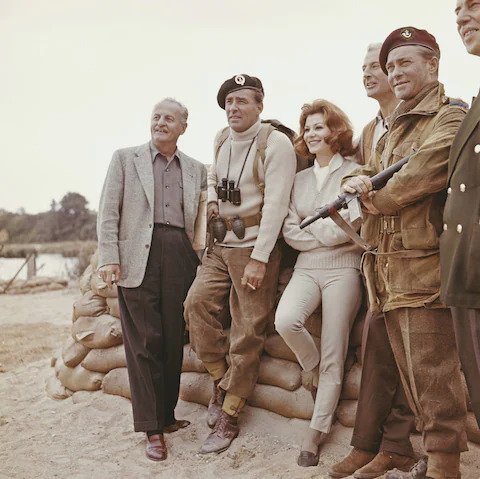
Before the shooting of the scenes were started at Pegasus Bridge, the film producer of The Longest Day, Darryl F. Zanuck, had the real life Lord Lovat and Major John Howard brought over to meet the men who were going to portray them (Peter Lawford portrayed Lord Lovat). The men had not seen each other since 6 June 1944.
Photo (above). From L-R: Peter Lawford, Lord Lovat, Richard Todd, Major John Howard.
#todd#richard todd#quote#british army#D Day#DDay#Normandy#pegasus bridge#war#second world war#major john howard#parachute#battle#actor#soldier#paratrooper#the longest day#film#movie#cinema#britain
115 notes
·
View notes
Text
Hollywood call for withdrawing Bisan Owda's Emmy Nomination - DENIED
Creative Community for Peace, a pro-Israel nonprofit organization, called for the National Academy of Television Arts and Sciences to rescind an Emmy nomination for Bisan Atef Owda, a Palestinian journalist. Owda was nominated by NATAS in the Outstanding Hard News Feature Story: Short Form category, for the series “It’s Bisan From Gaza and I’m Still Alive.” They allege that Owda has documented ties to the Popular Front for the Liberation of Palestine (PFLP), a United States-designated terrorist organization. The letter, was signed by More than 150 entertainment industry leaders, including the likes of Debra Messing, Selma Blair, Sherry Lansing, Rick Rosen, Haim Saban, and Michael Rotenberg, among others.
Thank you for your letter of August 19, 2024, concerning the nomination of “It’s Bisan From Gaza and I’m Still Alive” for a 2024 News & Documentary Emmy Award. The News & Documentary Emmys have recognized excellence in television journalism for nearly half a century. The honored programs and reports have taken viewers to the front lines of every world conflict, probed political and cultural divides, and sought to illuminate even the darkest circumstances. Some of these works have been controversial, giving a platform to voices that certain viewers may find objectionable or even abhorrent. But all have been in the service of the journalistic mission to capture every facet of the story. In every case, submissions to the News & Documentary Emmys are judged by experienced journalists from across multiple news organizations, serving in an independent, volunteer capacity. NATAS does not intervene in or countermand the judgment of these journalists except when competition rules have been violated, nor does NATAS determine the eligibility or ineligibility of news reporting based on the political views represented. “It’s Bisan From Gaza and I’m Still Alive” was reviewed by two successive panels of independent judges, including senior editorial leadership from each significant U.S. broadcast news network. It was selected for nomination from among more than 50 submissions in one of the year’s most competitive categories. The piece was also recognized for journalistic achievement by the Peabody Awards and the Edward R. Murrow Awards, each administered by processes and organizations wholly separate from and independent of NATAS and the News & Documentary Emmys. NATAS is aware of reports, cited in your letter and initially surfaced by a communications consultant in the region, that appear to show a then-teenaged Bisan Owda speaking at various PFLP-associated events between six and nine years ago. NATAS has been unable to corroborate these reports, nor has it been able, to date, to surface any evidence of more contemporary or active involvement by Owda with the PFLP organization. Most critically, the content submitted for award consideration was consistent with competition rules and NATAS policies. Accordingly, NATAS has found no grounds, to date, upon which to overturn the editorial judgment of the independent journalists who reviewed the material. Thank you. I appreciate your courtesy in sharing our response with your cosigners. Sincerely, Adam Sharp, NATAS President & CEO
#bisan owda#bisan gaza#wizard bisan#palestine#palestinians#gaza#genocide#israeli atrocities#emmy nominated#emmy nominee#emmy awards#hollywood#israeli apartheid#israeli occupation#war crimes#free palestine#free gaza#justice#peabody awards#edward r murrow#journalism#al jazeera#debra messing#sherry lansing#selma blair#saban entertainment#israel lobby#slander#awards#documentary
7 notes
·
View notes
Text
Franchise Appreciation Day & National Matchmaker Day
Person A works at a fast food joint that creates a gimmicky matchmaking service via people’s orders as a marketing scheme, with the idea that people will meet and then use that specific chain as their date spot due to its association with their relationship, even offering a discounted first date if done at one of their restaurants and to cater weddings for a discount if the couple hit it off that well. Person A decides to use the system to pair up people in queer or odd ways, since they aren’t paid enough to care or use it for anything other than their own entertainment. Person B is a chaotic nuisance who keeps using the system, specifically at Person A’s place of work, because of Person A’s methods.
#mod poss#creative writing#writing prompt#fanfic prompt#fanfiction prompt#story prompt#creative writing prompt#ficinsp#alternate universe#plots and prompts#obscure holiday prompt#comedy au#job au#matchmaker au#food au#restaurant au
6 notes
·
View notes
Text
Excerpt from this story from Anthropocene Magazine:
It’s nice to hike through the woods with a few friends, feeling a little closer to the natural world. Perhaps you even entertain the idea of being in harmony with your surroundings.
It turns out, you might be more like a chainsaw at a chamber music concert.
The noise of a group of chatty hikers, it turns out, can set off panic among nearby animals. Their response is even more intense than if you drove a 4-wheeled offroad vehicle. And the effects can echo through the wilderness a week later, as wildlife avoid the site of even a small number of noisy human intrusions, according to new research.
“Noise from recreation can carry far beyond a trail system, so understanding how noise alone can affect wildlife is important for management,” said Mark Ditmer, an ecologist at the U.S. Forest Service’s Rocky Mountain Research Station who helped lead the study.
The woods are likely becoming a noisier place, as more people head outside to play. Last year a record 168 million Americans took part in outdoor recreation, according to the Outdoor Industry Association, a trade group. The pandemic lockdowns that closed many indoor venues is credited for boosting a trend that had already taken hold years earlier.
Outdoor recreation is often portrayed as leaving a light imprint on the natural world than. Sporting goods companies such as Patagonia tout their environmental credentials. The backcountry motto of “Leave No Trace” suggests humans can pass through a place without a mark.
But there is a growing realization that even the most low-impact activities can still affect wildlife. Increased human presence near wildlife is associated with a spike in stress hormones, abandonment of some habitat and drops in reproduction, among other things.
The scientists set up a series of experiments in the forests of western Wyoming, which draws thousands of visitors to nearby places like Grand Teton and Yellowstone national parks. They set up video cameras, audio speakers and motion detectors along trails created by wild animals, at least 650 meters from any place regularly traveled by people. When a creature passed a point on the trail, a video camera would start recording and a speaker located 20 meters away would begin broadcasting an audio recording of people engaged in an outdoor activity. That included hikers, mountain bikers, runners, and people riding offroad vehicles. In some cases, the audio was of a small group of relatively quite people. In others, it was groups of more than four talking a lot. The recordings lasted for up to 90 seconds. All told, the speakers were triggered more than 1,000 times, with video capturing the reactions of mule deer, elk, moose, red fox, black bears, pronghorn antelope, cougars, coyotes and wolves.
When the scientists reviewed the images, it became clear that the sounds of outdoor recreation had a major effect. Wildlife was between 3.1 and 4.7 times more likely to flee when hearing those recordings than when they heard recordings of nature or nothing at all. They also showed signs of being more guarded and vigilant for 2.2 to 3 times longer after hearing recreation-related noises, the scientists reported last week in Current Biology.
8 notes
·
View notes
Text
Matthew Taylor at Religion News Service:
(RNS) — This past month, a group of self-styled American Christian prophets released an urgent word from God on YouTube about an impending Islamic uprising in the U.S. Pointing to pro-Palestinian protests on college campuses, they declared that an “insurrection is forming that is like unto the communist takeover in Russia. … This is not only about bringing a Palestinian state to the Middle East but an Islamic state to North America and other nations.”
The good news, according to these prophets, is that God also says, “If the church repents, I will relent. I will protect your nations.” If this God-speaking-through-prophets-and-warning-nations-about-other-religions business sounds fringy and oddball in modern Christianity, it once was. But such prophecies and these prophets are rapidly redefining mainstream American evangelical theology, practice and politics. They are affiliated with a movement called the New Apostolic Reformation, a set of leadership networks whose leaders call themselves modern-day apostles and prophets and believe they are commissioned by God to take over the world.
This NAR movement runs like a golden thread through recent flashpoints of evangelical Christian support for Donald Trump, Christian nationalism and Christian extremism. NAR leaders were central to the mobilization of Christians for the Jan. 6 insurrection, and many apostles, prophets and NAR symbols were present around the U.S. Capitol that day. NAR ideas helped inspire the recent controversy surrounding the Alabama Supreme Court in vitro fertilization ruling. House Speaker Mike Johnson flies a flag outside his office that is closely associated with the NAR’s aggressive prophetic politics. The reasonable objector may argue that all of those things might be true, and yet the NAR could still be a fringe movement. How much influence do NAR ideas have on broader American evangelicalism? It’s true that the NAR networks come from the amorphous nondenominational, charismatic sector of American evangelicalism that seeks to restore the supernatural dimensions of early Christianity. Historically these groups have been outside the evangelical mainstream.
But we have collected data showing just how far these NAR-associated beliefs and practices have spread within American evangelical communities. The present-day reach and influence of these ideas may be shocking to those acquainted with conventional evangelicalism. Charismatic theologies, NAR prophecies and radical politics that once operated on the margins of evangelicalism have moved to the center of the action. Perhaps unsurprisingly, this transformation has a lot to do with Donald Trump.
[...] In the intervening decades, NAR ideas and leaders have become extremely popular in charismatic media, functioning as some of the top-tier thought leaders in the burgeoning nondenominational charismatic world. NAR networks also became increasingly politicized in the late 2000s, especially by a prophecy called the Seven Mountain Mandate, first formulated by NAR apostle (and Wagner mentee) Lance Wallnau. The Seven Mountains prophecy imagines every society as having seven major arenas of influence — religion, family, education, government, media, entertainment and commerce — and the prophecy commands Christians to conquer the tops of each of these mountains so that Christian influence can flow down into broader society. Put simply, the Seven Mountain Mandate is a prophetically derived, systematic program for Christian supremacy. Shortly after Trump declared his candidacy for president in summer of 2015, he enlisted his friend and spiritual adviser, Paula White-Cain, a charismatic apostle and televangelist, “to be the bridge between him and evangelicals.” White-Cain began by inviting many of her fellow charismatic evangelical leaders — Messianic rabbis, televangelists, prophets, NAR apostles and megachurch pastors — to meet with Trump early in the campaign.
These were the first evangelical leaders to begin endorsing Trump, signing on to his policy agenda and offering theological rationales for choosing Trump over other, more conventionally evangelical candidates. The popular idea that Trump was anointed by God (like the ancient Persian emperor Cyrus) to be president and play a special role in protecting Christians was originally championed early in the 2016 campaign by none other than Wallnau, who was involved in the 2015 meetings organized by White-Cain. A few months later Wagner himself endorsed Trump in early 2016, and Wallnau and the other NAR leaders became the chief Christian propagandists surrounding Trump with theology and prophecy. They have written books, created memes, prophetically appropriated symbolic pieces of Americana and launched massive prayer and spiritual warfare campaigns, all to see Trump victorious. Charismatics, including a number of NAR apostles and prophets, have made up more than half of all of Trump’s evangelical advisory boards, including the new one for his 2024 campaign. In fact, these networks of NAR leaders were the central nervous system of Christian organizing and mobilization for Jan. 6, and many core NAR leaders, including Wallnau, were present at the Capitol that day.
Trumpism has fueled the rise of a very different breed of evangelical Christian movement: New Apostolic Reformation (NAR), NAR's tenets feature Seven Mountains Dominionism (7MD) and an aggressively Christian nationalist vision of America with a charismatic tinge.
#Christian Nationalism#Christian Right#Christianity#Religion#Donald Trump#Trumpism#New Apostolic Reformation#NAR#Paula White#Lance Wallnau#C. Peter Wagner
9 notes
·
View notes
Text
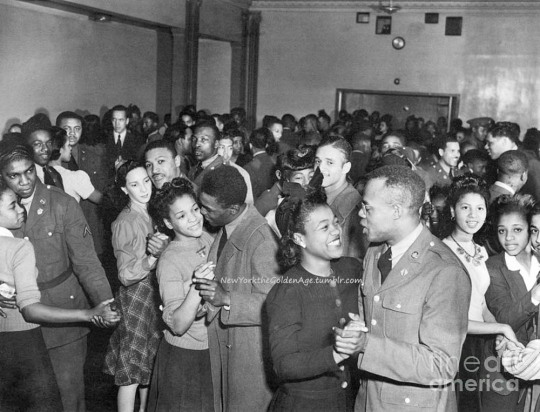
Servicemen being entertained at the weekly Saturday night USO dance held at the YMCA in Harlem, February 7, 1942. In 1941, the YMCA, YWCA, National Catholic Community Service, National Jewish Welfare Board, Travelers Aid Association, and Salvation Army together formed the United Service Organizations to offer recreation for soldiers on leave.
Photo: Robert Kradin for the AP via Fine Art America
#vintage New York#1940s#Robert Kradin#USO#Feb. 7#February 7#vintage Harlem#dance#dancing#YMCA#ballroom dancing#ballroom dance#soldiers#Black soldiers#World War II#home front
90 notes
·
View notes
Text
Fredi Washington - The Dark Duse of Hollywood












Fredericka "Fredi" Washington (born on December 23, 1903 in Savannah, Georgia) was an American actress who refused to live by racial stereotypes. She is one of the first Black Americans to gain recognition for her work on film and on the stage, earning her the nickname of "The Dark Duse of Hollywood."
The daughter of parents who were both of mixed African and European ancestry, Washington had green eyes and light skin that belied the era’s common expectations of what an African-American “looked like.” She moved to Harlem along with her family during the Great Migration, when Black families fled the Southern states where Jim Crow laws were upheld in search of new opportunities in Northern cities.
Washington's entertainment career began in 1921 as a chorus girl on Broadway. She was hired by dancer Josephine Baker as a member of the "Happy Honeysuckles", a cabaret group. She quickly became a popular, featured dancer, and toured internationally.
Washington turned to acting and moved to Hollywood in 1928. She made her movie debut the year after. Her best-known movie roles were in Imitation of Life (1934) and One Mile from Heaven (1937); both films were social commentaries of the era's views on race.
Despite receiving critical acclaim for her performance, studio heads had no idea what to do with an African-American woman with an ivory complexion, pale green eyes, and light brown hair. Considered too beautiful to play servant roles (the only mainstream opportunities for Black actresses in the 1930s) and since the film production code prohibited suggestions of miscegenation, Washington wore dark, heavy makeup in race films - independent features geared towards Black audiences.
After turning down several roles requiring her to pass for White, she quit movies, moving back to New York City. Her experiences in the film industry and theater led her to become a civil rights activist and a writer.
Washington died, aged 90, from pneumonia following a series of strokes while living in Stamford.
Legacy:
Co-founded the Negro Actors Guild of America in 1936 and served as its first executive secretary
Served in the American Women's Voluntary Service during World War II
Actively involved with and lobbied for social activist groups, such as the Cultural Division of the National Negro Congress, the Committee for the Negro in the Arts, the Actors' Equity Committee on Hotel Accommodations for Negro Actors throughout the United States, and the National Association for the Advancement of Colored People since 1937
Served as the entertainment editor for The People's Voice from 1943 to 1948
Gifted a collection of her personal papers to the Connecticut Historical Society in 1958, the Amistad Research Center in Tulane University in 1975 and 1979, and the Schomburg Center for Research in Black Culture at The New York Public Library in 1982
Inducted into the Black Filmmakers Hall of Fame in 1975
Received the CIRCA Award for lifetime achievement from the Detroit Institute of Arts in 1979
Received an award from the Audience Development Company (AUDELCO), a New York-based nonprofit group devoted to preserving and promoting African-American theater, in 1981
#Fredi Washington#The Dark Duse of Hollywood#Imitation of Life#Africa-American#Black Girl Magic#Black Women#Silent Films#Silent Era#Silent Film Stars#Golden Age of Hollywood#Classic Hollywood#Film Classics#Old Hollywood#Vintage Hollywood#Hollywood#Movie Star#hollywood legend#movie stars#1900s#25 Hollywood Legends Born in the 1900s
2 notes
·
View notes
Text
The second pillar of the argument Texas is making is the so-called “compact theory” – an idea that has not been entertained by serious people in a long, long time. According to the compact theory, the constitution is just a contract that entails certain duties the federal government, and especially the president, has to fulfill. If those duties are neglected, the states, understood as sovereign entities, are free to disregard federal authority, ignore federal law, and, ultimately, leave the Union. This is precisely the argument slave states used to justify secession. As Mark Joseph Stern succinctly put it with regards to Abbott’s statement: “This language embraces the Confederacy’s conception of the Constitution as a mere compact that states may exit when they feel it has been broken.” Honestly, it makes sense for Abbott and today’s reactionary Right to adopt these neo-confederate arguments. In a way, they are just explicitly emphasizing the tradition in which their political project stands, as they are once again defying the federal government and deploying “states’ rights” in order to justify inhumane brutality in service of upholding white nationalist domination. The fact that this argument was resoundingly defeated – politically and on the battlefield – does not matter to them: The Republican Party and the extremist Right are all in. Among the first to announce support for Greg Abbott was Speaker of the House Mike Johnson. 25 Republican governors have endorsed the position of Texas, pledging their support for Abbott’s fight against the federal government and for the legal theories justifying it; some are even vowing to send their national guards, itching to escalate the situation further. That is something Donald Trump would very much like – he has already called on Republican states to “deploy their guards to Texas to prevent the entry of Illegals, and to remove them back across the Border.” And nothing mobilizes rightwing extremists like a standoff with the federals in service of white domination: Elon Musk is on Abbott’s side, propagating Great Replacement conspiracies, the barely concealed subtext of this whole thing, by accusing Biden of wanting to bring in immigrants as illegal voters. And far-right activists have called for a “Take back our border” rally. What could possibly go wrong. [...] But as much as I am professionally obligated to caution against facile historical analogies, Republican states are, right now, openly and aggressively endorsing the argument that led this country into a Civil War. There are, at the very least, some very concerning echoes; and more importantly, there are powerful traditions and continuities. Republican governors are proudly taking up the “states’ rights” mantle to defy the federal government. On the level of the underlying political project and vision of what America should be, there is a fairly direct line from the secession of slave states to today’s neo-confederate use of the “compact” theory as a way to justify the cruel crackdown on an “invasion” of people of color. And as much as the Civil War analogy may tend to invoke misleading associations, it can actually be helpful if it alerts people to the seriousness of the situation and to the prospect of violence. Because the fact that we will not get a rematch between vast armies dressed in blue and gray meeting on the battlefield does not mean the current situation isn’t extremely volatile and dangerous, or that there won’t be violence. There is likely going to be a lot more political violence.
#us politics tag#us history#thomas zimmer#quotes#awful that US media is such a mess#that this isn't being covered well#media consolidation has destroyed a lot of good journalism#you've got news rooms firing reporters#even as we go into one of the most dangerous periods of recent history in US politics
10 notes
·
View notes
Text
Sol Fertilis: Omega Association
Omega Association
The Fertile Omega Association of Sol Fertilis, known simply as the Omega Association, is a political organization for Omegas. It is the first and only organization that is run by and caters to Omegas. Originally small and humble in Messenia, has since grown to have a committee, located in an omegamansio, in every county in Sol Fertilis with the main organization in Olympia, run by a chairwoman. Most, if not all, of the Omegas are already mothers.
The main goal of the Omega Association is to increase the political participation of Omegas, either on their own or by influencing their Alpha husbands or sons. The other goals are to increase fertility, parenting advice, conform to the Sol Fertilian ideology, and how to manage their households. They have a major influence on how the PNP conducts internal affairs and diplomacy.
As they are the only group run by Omegas, they run several organizations and a few of the Ministry of Entertainment’s studios, due to Gretchen Lamarr being the wife of Minister Lamarr. This includes but is not limited to the Peony Hearth magazine, the Rose Weekly, and all the Omega Iuventutis Foederatios (youth organizations). The young Omegas will automatically join the Omega Association once they are of age.
For activities, they rarely do any physical activity, unless it is Harmonious Conditioning. They play golfing, bowling, croquet, swimming, mousike contests, and board games. They found games like volleyball and softball to be needlessly physically demanding. While not sheltered, they have a very closed lifestyle, rarely ever seen in public if it is not for holidays or political events. Since Sol Fertilis does not have any fundraisers, the Omegas would be shocked at the concept, wondering why weren’t taxes used to aid in public services.
Despite their lack of appearances, they are praised by non-Omega women, who see them as “demure and graceful”.
The Omega Association has a strict set of standards on who they would interact. Even women from ultraconservative countries, such as Iran, are rejected due to this. They refused to interact with discriminatory women, were mistresses before marriage, wives of war criminals, and did not have their own “ideals”.
They also do not like the Lady Patriots Society as Melinda and the other members are Ostanian, with some being associated with the National Unity Party. However, the two groups are forced to interact with each other as moderate PNP members want to build a positive relationship with post-war Ostania. It should be noted that some of the Omega Association members would wear gloves wot avoid touching anything that relates to Ostanian and they would have an armed guard with them.
While there were discussions of allowing Concubina in the group, it was ultimately rejected. Although, the Ministry of Leisure created the Concubina Union shortly after the decision and there are little to no restrictions to the two groups’ interaction.
Founding Members
Elizabeth Brisby
Reina Morganstern
Caryne Yale
Paloma Calza
Katia Gleeson
Gretchen Lamarr
Mairead Neville
Veronique Pauza
Margola Horvat
Yun Yeong-Suk
Omegamansio: (noun) Combining "Omega" (Omega) with "mansio" (house or dwelling), signifying a place where Omegas gather for socialization, consuming fertility-enhancing light meals, drinking non-alcoholic beverages, and discussing matters relevant to their roles and responsibilities.
#sol fertilis#dystopia#omegas#omega#dystopic#omegaverse#dystopian omegaverse#dystopian#leisure#omega association
3 notes
·
View notes
Text
By: Julian Adorney, Mark Johnson and Geoff Laughton
Published: Jun 29, 2024
American communities have been systematically hollowed out over the past 50 years. In Bowling Alone, Harvard political scientist Robert Putnam makes an exhaustively-researched case that confirms what most people who lived through this period already know: community life is on the decline. For most of the first two centuries of American history, people were enmeshed in a dense web of civic associations. We bowled together, attended church, participated in Rotary Club meetings, and volunteered for local political groups together. We played bridge with our neighbors and gathered for regular book clubs.
This vibrant communal engagement fostered a deep-seated trust among neighbors. In 1964, a remarkable 77 percent of Americans agreed with the statement, “most people can be trusted.” But starting in the 1970s, the fabric of American society began to unravel. The strong community bonds that once unified us began to fray, one by one; and our social capital (Putnam’s term for the “connections among individuals—social networks and the norms of reciprocity and trustworthiness that arise from them”) has decreased dramatically.
For instance, Putnam notes that while the total number of national nonprofit associations more than doubled from 1968 to 1997, the average membership per association plummeted—from roughly 10,000 in 1962 to around 1,000 in 1988. This translates to an almost 80 percent decrease in the number of Americans involved with national nonprofits over three decades. Additionally, Putnam cites time diaries showing that in 1965, Americans spent an average of 3.7 hours per month in non-religious organizational activities, such as Key clubs, Rotary clubs, bowling leagues, and others. By 1995, that number had fallen to 2.3 hours per month.
It’s not just organizational ties that are being frayed; we’re spending less time with friends too. As Putnam notes, “In the mid-to late 1970s, according to the DDB Needham Life Style archive, the average American entertained friends at home about fourteen to fifteen times a year. By the late 1990s that figure had fallen to eight times per year, a decline of 45 percent in barely two decades.”
Since the publication of Bowling Alone in 2000, the societal disengagement Putnam described has gotten worse. The rise of social media and streaming services like Netflix are keeping us increasingly alone in our rooms, plugged in but disengaged from meaningful interaction with our fellow humans. A 2018 Adobe report focusing on the United Kingdom found that Millennials spend an average of 8.5 hours per day engaging with online content. For Generation Z, that number rises to an astounding 10.6 hours per day. When you account for hours spent sleeping, there is little time left for young people to engage in face-to-face community activities. Indeed, data show that they’re not engaging. In his book The Anxious Generation, social psychologist Jonathan Haidt notes that the percentage of middle- and high-school students who report meeting up with friends “almost every day” outside of school has fallen dramatically since the 1990s—a trend exacerbated by a global pandemic that confined everyone to their homes for two years.

[ Source: https://www.anxiousgeneration.com/research/notes-and-figures ]
What does the decline of community life since the 1970s have to do with rising illiberalism? As social animals, our sense of connection greatly influences our happiness. A study published in The Journal of Socio-Economics highlights just how essential community is for our well-being. This study surveyed 10,000 adults in England, examining the factors that make them happy or unhappy. Surprisingly, money didn’t seem to matter much. According to the authors, “Income only plays a small part in influencing our well-being.” Instead, a sense of community was paramount to participants’ happiness. In particular, having a single close friend was deemed as valuable as an additional $150,000 in yearly income.
In 2021, nearly half of Americans (49 percent) reported having three or fewer close friends, a significant drop from 27 percent in 1990. Maybe that’s why so many Americans are unhappy these days. According to Gallup’s 2024 World Happiness Report, America ranks 23rd in global happiness. An MSNBC report also notes that “Self-reported happiness in the U.S. has been on the decline for the past two decades.” Furthermore, 32.3 percent of American adults—and a stunning 49.9 percent of young people aged 18-24—suffer from anxiety or depression.
Could this widespread dissatisfaction with modern life be causing a shift away from liberalism? Data suggests it might be. A study published in the prestigious Proceedings of the National Academy of Sciences titled “The rise and fall of rationality in language,” systematically analyzes the relative frequencies of emotional and rational words in massive databases of written language, from Google Books and the New York Times, from 1850 to 2019. Emotional words such as “angry,” “unexpected,” “embarrassed,” and “tortured” are contrasted with rational words like “indicate,” “area,” “program,” and “determine.” The study found that from 1850 to the 1980s, the relative proportion of emotional words consistently decreased, while rational words increased. However, starting in the 1980s, a reversal occurred; our discourse became more emotional and less rational. By 2019, the use of rationality-related words had declined to levels not seen in over a century.
What does this decline in rationality signify? The authors suggest that it might reflect a growing “disillusion with ‘the system.’” As they note, “rationality…helped build and defend the system” in which we all live. Thus, a move away from rationality might reflect our collective anger at the liberal social order that we think is making us lonely and disconnected.
The connection between social isolation and political illiberalism isn’t new; it has been well-established by social psychologists. As Haidt writes in The Righteous Mind, social connectedness serves as a bulwark against totalitarianism.
If people can’t satisfy their need for deep connection in other ways, they’ll be more receptive to a smooth-talking leader who urges them to renounce their lives of “selfish momentary pleasure” and follow him onward to “that purely spiritual existence” in which their value as human beings consists.
In contrast, “a nation that is full of hives [Haidt’s term for civic associations] is a nation of happy and satisfied people. It’s not a very promising target for takeover by a demagogue offering people meaning in exchange for their souls.”
Putnam argues that social isolation may fuel political extremism for a different but related reason: it puts us into echo chambers, which moves us politically towards the fringe.
When people lack connections to others, they are unable to test the veracity of their own views, whether in the give-and-take of casual conversation or in more formal deliberation. Without such an opportunity, people are more likely to be swayed by their worst impulses. It is no coincidence that random acts of violence, such as the 1999 spate of schoolyard shootings, tend to be committed by people identified, after the fact, as “loners.”
In other words, when we feel lonely, adrift, and unhappy, we may be more susceptible to the appeals of extremists on both the left and the right who promise community and utopia contingent on our willingness to overturn the existing social order.
So, if a decline in community life is fueling a demand for illiberalism, what can we do about it?
First, we can robustly and emphatically defend liberalism. We can clarify to people that their social malaise is a product of many factors unrelated to liberalism, and that abandoning a liberal social order is unlikely to alleviate it. We can peel back the curtain and reveal the realities of societies that have moved away from political, economic, and epistemic liberalism, demonstrating how these changes often worsen people’s lives. This is essential work, and we are indebted to the many great organizations and websites (including Reality’s Last Stand and New Discourses) that have been doing it.
But even as we articulate the benefits of liberalism, there is another approach we can simultaneously pursue: rebuilding the American community.
Putnam’s analysis is bleak, but he shares an essential silver lining: we have been here before. At the end of the 19th century, Americans faced many similar issues. Rapid industrialization had ushered in unprecedented material prosperity, but small towns and rural villages were being gutted. Increasingly, people found themselves lonely, adrift, and disengaged—but they recognized the problem and went to work. They founded churches, schools, clubs, and political organizations, sparking a social renaissance. Here’s how Putnam describes the “massive new structure of civic associations” that emerged as a result:
In the last decades of the nineteenth century Americans created and joined an unprecedented number of voluntary associations. Beginning in the 1870s and extending into the 1910s, new types of association multiplied, chapters of preexisting associations proliferated, and associations increasingly federated into state and national organizations. In Peoria and St. Louis, Boston and Boise and Bath and Bowling Green, Americans organized clubs and churches and lodges and veterans groups. Everywhere, from the great entrepôt metropolises to small towns in the heartland, the number of voluntary associations grew even faster than the rapidly growing population.
This civic renewal helped to knit the country back together. It rebuilt a new wave of civic associations to replace the ones that had been frayed or bulldozed by rising industrialization.
So, what if we did the same? What if our commitment to defending liberalism inspired us to look out and up, rather than merely down and in? What if we joined—or founded—PTAs, local churches, Rotary Clubs, and sporting leagues? What if we invited others in our community and networks to join with us, especially those who seem lonely and disaffected?
By fostering a civic renaissance, we could not only become happier and more connected; we could also address the root cause of illiberalism at its source.
-
About the Authors
Julian Adorney is a columnist at Reality's Last Stand and the founder of Heal the West, a substack movement dedicated to preserving liberalism. He’s also a writer for the Foundation Against Intolerance and Racism (FAIR). Find him on X: @Julian_Liberty.
Mark Johnson is a trusted advisor and executive coach at Pioneering Leadership and a facilitator and spiritual men's coach at The Undaunted Man. He has over 25 years of experience optimizing people and companies—he writes at The Undaunted Man’s Substack and Universal Principles.
Geoff is a Relationship Architect/Coach, multiple-International Best-Selling Author, Speaker, and Workshop Leader. He has spent the last twenty-six years coaching people world-wide, with a particular passion for supporting those in relationship, and helping men from all walks of life step up to their true potential. Along with Mark, he is a co-founder of The Undaunted Man.
==
Not churches, but okay.
#Julian Adorney#Mark Johnson#Geoff Laughton#liberalism#isolation#illiberalism#community#psychology#human psychology#disconnected#liberal ethics#liberal values#unhappiness#depression#anxiety#mental illness#mental health#mental health issues#religion is a mental illness
5 notes
·
View notes